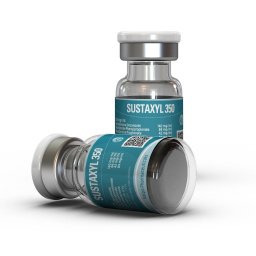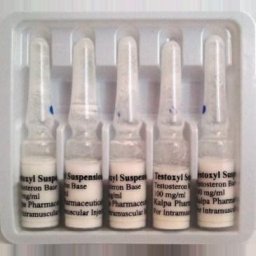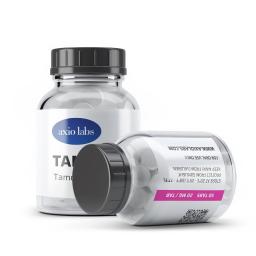Fat soluble vitamins are found in meats, liver, dairy, egg yolks, vegetable seed oils, and leafy green vegetables. Some foods such as milk and margarine are artificially fortified with vitamins A and D. These vitamins are metabolized along with fat in the body and require fat for absorption in the gut. The fat-soluble vitamins may be stored in large amounts, and this gives them the potential to cause toxicity if consumed in high amounts. Deficiencies are rare in adults but may be seen in children. Megadosing of fat soluable vitamins, except where indicated by a medical professional, is potentially dangerous and should be avoided. Two of the fat-soluble vitamins, A and D, have hormone like actions, causing specific cells to increase or decrease the expression of certain genes.
Vitamin A (retinol) plays a vital role in the functioning of the retina, growth and maturation of the cells lining the inner and outer surfaces of the body (the epithelial cells), growth of bone, reproduction and embryonic development. Several compounds have vitamin A activity and they are referred to as retinoids. They function with certain carotenoids to protect against the development of certain cancers and to enhance immune function. Carotenoids are substances that are consumed in the diet, some of which are converted to vitamin A. They may also have antioxidant activity.
Deficiency
Vitamin A deficiency causes night blindness, a condition in which vision is impaired in dim light. Dryness and ulceration of the eyes, skin eruptions and dryness, abnormal cells of the mucous membranes, urinary stones, and impaired taste and smell also characterize the deficiency. Many children in developing countries have irreversible blindness resulting from vitamin A deficiency. In the US, it occurs more commonly in chronic diseases that affect fat absorption such as pancreatic insufficiency and portal cirrhosis, or following removal of a portion of the stomach. Vitamin A is stored in several sites in the body, so when a deficiency occurs, supplements must be given long enough for these stores to be replenished.
Toxicity
Toxicity from excessive doses of vitamin A can also occur. Chronic ingestion of toxic doses results in symptoms progressing from mild dermatitis to hemorrhage, increased intracranial pressure, and liver damage. Pregnant women that ingest quantities above that which is recommended can cause the development of fetal malformations. Women that have been treated with synthetic retinoids that accumulate in fat may require several drug free years or longer before the increased risk to the fetus subsides.
Dietary Sources & RDA
The best sources of vitamn A are highly pigmented vegetables and fortified margarine.A normal diet contains both carotenoids and vitamin A, so calculations of dietary vitamin A combines both sources and is often measured in retinol equivalents (REs). The RDA for males 11 years and older is 1000 RE (3300 units); for females 11 years and older is 800 RE (2700 units); for pregnant females, 800 RE (2700 units); for lactating females during the first 6 months, 1300 RE (4300 units) and during the second 6 months, 1200 RE (4000 units). Topical forms of vitamin A are used in the treatment of several conditions including acne, psoriasis and to reverse the damage resulting from sun exposure.
Vitamin E (tocopherol) has many actions in the body. It mainly acts as an antioxidant of lipids, protecting cell membranes and preventing damage to membrane associated enzymes. The manifestation of a deficiency is rare in the US because it is present in many foods and there are large total body stores. Vitamin E is present as alpha, beta and gamma tocopherols. Supplements may contain the alpha tocopherol that is either in the “d” form or a combination of the “d” and “l” forms. The “d” form is more active than the “l” form but when comparing supplements, an equivalent number of international units (IU) indicate equivalent activity. Less information is available about the action of the beta and gamma tocopherols, but they appear to have different antioxidant effects. A supplement that contains all forms may provide the greatest benefits. There are several conditions in which vitamin E supplementation may have a beneficial effect but these remain to be proven by long-term studies. It may slow the progression of Alzheimer’s disease, prevent heart disease, improve immune function in the elderly, reduce the risk of cataracts and decrease the pain associated with arthritis.
Deficiency
There is no known syndrome associated with vitamin E deficiency in adults but in premature infants, anemia may be seen.Vitamin E supplements are sometimes given to people at a risk for developing a deficiency such as children with cystic fibrosis, cholestatic liver disease or other disorders of gastrointestinal absorption.
Toxicity
A high dietary intake may decrease the risk of some cancers, but oral supplements do not appear to have the same effect. High doses of supplements interfere with blood clotting and may increase the risk of bleeding in people with bleeding tendencies or those on anticoagulants (blood thinners). Megadose intake may induce blurred vision or headaches.
Dietary Sources & RDA
The major sources for this vitamin are vegatable seed oils. The RDA for d-alpha tocopherol for males 11 years and older is 15 IU; for females 11 years and older, 12 IU; for pregnant females, 15 IU; for lactating women during the first 6 months, 18 IU and during the second 6 months, 16.5 IU.
Vitamin D (calciferol) acts as a hormone that promotes formation of bone by increasing the blood levels of calcium and phosphorus. It is synthesized by the skin upon exposure to sunlight. Receptors for vitamin D are found throughout the body and it is thought that they mediate a variety of activities, some of which are unrelated to calcium metabolism.
The precursor for vitamin D3 (cholecalciferol) is a product of cholesterol metabolism. The precursor for vitamin D2 (ergocalciferol) is found in plants. In humans, vitamins D2 and D3 appear to have the same activity and they are referred to collectively as vitamin D. Vitamin D is activated by the liver and kidney (although several other organs can participate in its activation) to calcitriol. The ability and necessity of maintaining tight control of calcium levels in the blood is served by interaction of many components including vitamin D and parathyroid hormone (PTH). When calcium levels decrease, vitamin D stimulates increased intestinal absorption of calcium and phosphorus, increased release of calcium from the bone, and decreased excretion of calcium in the urine.
Deficiency
Without vitamin D, there is insufficient absorption of calcium and phosphorus, and the blood levels of calcium are maintained at the expense of bone break down. In children, impaired bone and cartilage formation leads to rickets, characterized by skeletal deformities. In adults, osteomalacia can occur in which impaired bone mineralization can lead to bone pain and deformity in advanced cases.
Vitamin D supplements are used in the treatment of nutritional rickets. Supplements may also be used in the treatment of conditions associated with poor absorption such as diarrhea and biliary obstruction, and in metabolic disorders involving abnormalities of vitamin D metabolism. Other uses are in patients with hyperparathyroidism and osteoporosis. Calcium supplements frequently contain vitamin D. Other nontraditional uses of vitamin D are being investigated.
Toxicity
Excessive consumption of vitamin D, known as hypervitaminosis D, can cause calcium levels in the blood to reach toxic, life-threatening levels. Toxicity can also occur in the fetus.
Dietary Sources & RDA
Vitamin D has been added to milk purchased in the U.S. and it is naturally formed via the action of ultraviolet light on precursors in the skin.
Vitamin K is essential for the formation of several blood clotting factors, therefore the main symptom of a deficiency is an increased tendency to bleed. It antagonizes the action of oral anticoagulants (blood thinners) such as warfarin. Vitamin K1 (phytonadione) is found in plants, vitamin K2 (the menaquinones) is made by bacteria in the gut, and vitamin K3 (menadione) is the precursor to menaquinone-4.
Deficiency
Defective blood clotting is present in vitamin K deficiency. Symptoms can be produces by coumarin anticoagulants and by antibiotic therapy. Inadequate vitamin K may be absorbed with obstruction to bile flow since the vitamin is poorly absorbed in the absence of bile. Other forms of malabsorption from the gastrointestinal tract and certain types of liver disease may also lead to a vitamin K deficiency. Vitamin K may be given to infants with bleeding tendencies. Doses of vitamin K are individualized and should only be given with medical supervision.
Legit Steroid Products Online
Buy Sustaxyl 350
|
Legit Testoxyl Suspension 100
|
Legit Tamoxiplex
|


